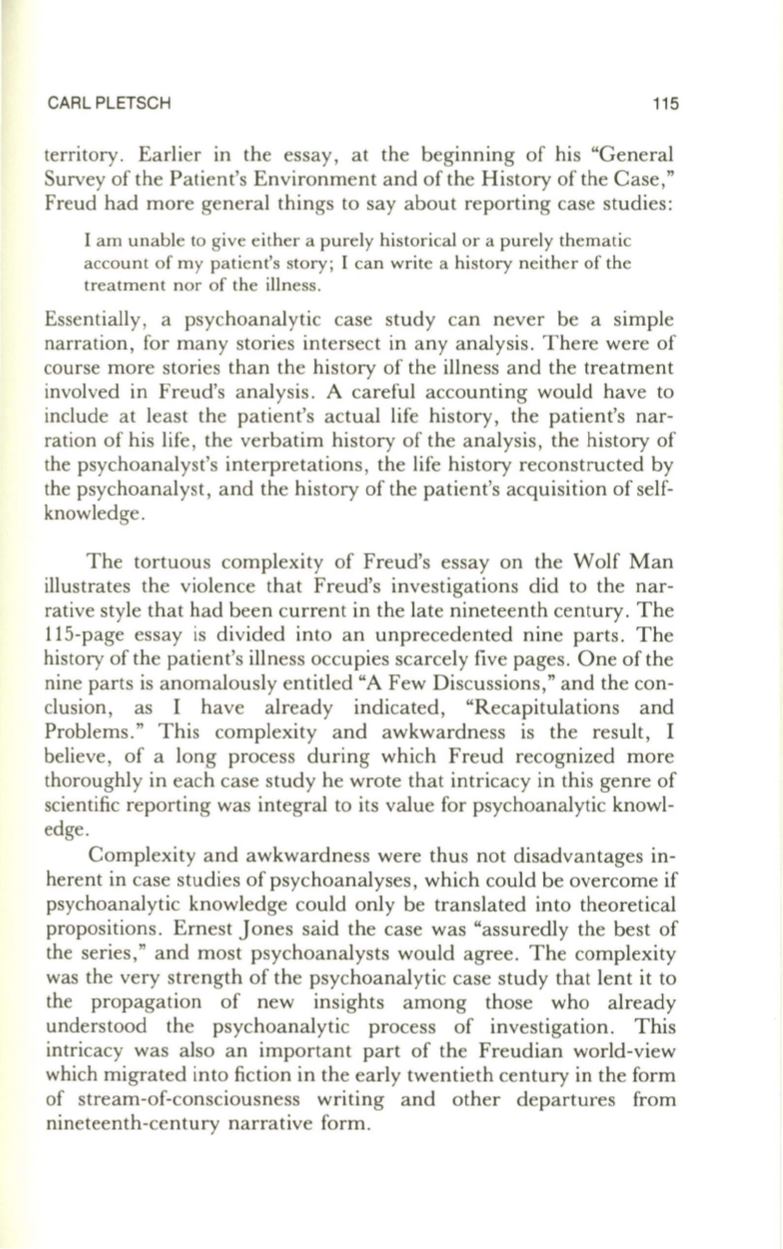
CARL PLETSCH
115
territory . Earlier in the essay, at the beginning of his "General
Survey of the Patient's Environment and of the History of the Case,"
Freud had more general things to say about reporting case studies:
I am unable to give either a purely historical or a purely thematic
account of my patient's story; I can write a history neither of the
treatment nor of the illness.
Essentially, a psychoanalytic case study can never be a simple
narration, for many stories intersect in any analysis. There were of
course more stories than the history of the illness and the treatment
involved in Freud's analysis . A careful accounting would have to
include at least the patient's actual life history, the patient's nar–
ration of his life, the verbatim history of the analysis, the history of
the psychoanalyst's interpretations, the life history reconstructed by
the psychoanalyst, and the history of the patient's acquisition of self–
knowledge.
The tortuous complexity of Freud's essay on the Wolf Man
illustrates the violence that Freud's investigations did to the nar–
rative style that had been current in the late nineteenth century. The
115-page essay is divided into an unprecedented nine parts. The
history of the patient's illness occupies scarcely five pages. One of the
nine parts is anomalously entitled "A Few Discussions," and the con–
clusion, as I have already indicated, "Recapitulations and
Problems ." This complexity and awkwardness is the result, I
believe, of a long process during which Freud recognized more
thoroughly in each case study he wrote that intricacy in this genre of
scientific reporting was integral to its value for psychoanalytic knowl–
edge .
Complexity and awkwardness were thus not disadvantages in–
herent in case studies of psychoanalyses, which could be overcome if
psychoanalytic knowledge could only be translated into theoretical
propositions. Ernest Jones said the case was "assuredly the best of
the series," and most psychoanalysts would agree. The complexity
was the very strength of the psychoanalytic case study that lent it to
the propagation of new insights among those who already
understood the psychoanalytic process of investigation. This
intricacy was also an important part of the Freudian world-view
which migrated into fiction in the early twentieth century in the form
of stream-of-consciousness writing and other departures from
nineteenth-century narrative form.


